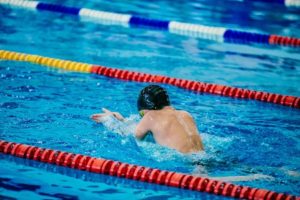All Posts
Protecting Your Neck: Why Proper Breaststroke Techniques Are So Important
Dan | May 25 2016 | , Blog, Swim Safety, Swim Tips
 As your child progresses through his or her swim lessons, it’s natural to have questions about the skills being taught and why certain techniques seem to be so important. While children are younger, the goals for their swim lessons tend to revolve around learning to be safe in and near the water. When they have become proficient at the basic skills, the goals tend to turn towards proper techniques, so they can enjoy the benefits of swimming long into adulthood.
As your child progresses through his or her swim lessons, it’s natural to have questions about the skills being taught and why certain techniques seem to be so important. While children are younger, the goals for their swim lessons tend to revolve around learning to be safe in and near the water. When they have become proficient at the basic skills, the goals tend to turn towards proper techniques, so they can enjoy the benefits of swimming long into adulthood.
The Problem: Head-Above-Water Breaststroke
Many swimmers, both young and older, often use a head above water variation of the breaststroke. Perhaps it’s because the swimmer is uncomfortable putting his or her face in the water or because he thinks he is using less energy. Regardless of the reason, swimming the breaststroke with your head above water can put a significant and unnecessary strain on your neck.
Imagine walking for twenty minutes with your face pointed straight up towards the sky. After your stroll, you’d have quite a neck ache! Swimming the breaststroke with your head above water puts your body in essentially the same position.
The Solution: Proper Spinal Alignment for the Breaststroke
While swimming the breaststroke, your spine should remain relatively straight from your head to your tailbone. If your head remains out of the water, you are unnecessarily straining the vertebrae in your neck with an unnatural arch. Here are some tips to help you keep your spine properly aligned as you swim the breaststroke:
- Position your head slightly forward with a mild tuck in your chin to help you keep your neck straight.
- Pull in your abdominal muscles to support your straight back.
- Keep your hips as close to the surface as possible to avoid a bend in your lower spine.
- As your arms start the pull phase, bring your head out of the water and breathe in through your mouth. Keep your head and shoulders relaxed and free from tension.
- As you reach your arms forward in the recovery stage, extend your head forward into the water with your ears in line with your biceps. Exhale slowly through your nose or mouth.
Developing a proper technique for any swim stroke takes time and training, but these tips will help you avoid straining your neck and back while you perfect your efficiency in the water.
Remember, learning the proper technique for swimming the breaststroke and all other swim techniques is a rewarding accomplishment at any age. The experienced swim instructors at Premier Aquatic Services are trained to work with swimmers of every age and ability. Visit our Swim School to learn more.
For more information on water safety, follow us on Facebook.
